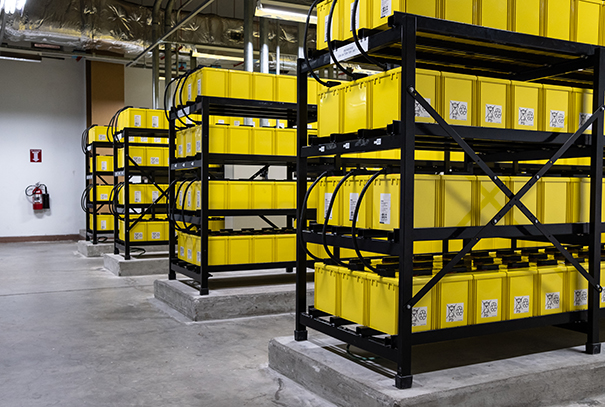
According to market research firm, GlobalData, the global BESS market is expected to grow by US$5 billion between 2021 and 2025, reaching US$11.04 billion.
The UK is among the leaders in BESS construction with installed capacity of more than 1GW and estimates putting the total pipeline of new battery storage projects at between 14GW to more than 16GW. By 2030, the UK could hold a 35% share in the European storage market on the back of strong renewable growth, dwindling thermal generation and an established legislative framework for the technology.
Most existing UK BESS facilities remain small but changes to planning rules will make it easier to construct larger plants. In 2020, secondary legislation came into force that allowed local planning authorities to determine projects with a capacity over 50MW in England and 350MW in Wales. In the past, projects of this size were determined by central Government, a longer and more complex process that resulted in many plants being built just under the 50MW threshold.
Leading the way is the new InterGen project on the Thames Estuary, which will provide at least 320MW/640MWh of capacity with the potential to expand to 1.3GWh. Planning approval was granted in November 2020 with construction likely to begin in 2022 on what will be one of the largest BESS facilities in the world.
Despite the potential for growth, BESS development is facing challenges with particular concern voiced over the potential fire risk. A number of insurers have withdrawn from the market on the back of fires at BESS facilities around the world, including South Korea, where 23 BESS fires have occurred since August 2017. In the UK, a 20MW project in Liverpool suffered fire damage to one of its three large grid battery system containers in September 2020.
For those insurers that continue to offer coverage, fire risk is the predominant concern to the point that projects that fail to demonstrate adequate fire protection are finding it difficult to find coverage. To this end, project owners will benefit from early consultation with their insurance brokers in the design and engineering process to ensure required fire protection measures are incorporated to meet insurer’s increasingly strict conditions.
There are a range of factors to consider, notes Julian Preedy, a specialist fire risk assessment engineer, in a recent white paper. These include the layout and construction of containers to ensure adequate structural integrity to contain potential off-gas explosion in the event of fire, as well as gas detection and venting systems, and explosion relief panels. The risk of explosion during a BESS fire was highlighted in 2019 at the McKicken facility in Arizona, where an aerosol suppressant was ineffective in preventing buildup of explosive gases, which ignited when emergency workers opened the door, injuring several.
Batteries should be spaced out (Preedy recommends at least a 1m gap between opposite banks) with a fireproof barrier between racks to reduce the risk of fires spreading. The inclusion of water-deluge systems is also becoming a standard requirement of insurers, after inert gas systems have proved inadequate to suppress the self-heating battery chemical reaction, which can result in re-ignition up to several hours after the initial fire.
Meanwhile, developments in BESS construction pose additional challenges with double-decker facilities, where battery containers are stacked on top of each other to add capacity at existing facilities, a particular risk, especially if the fire occurs in the lower container.
As fire risks become better understood and mitigation techniques more widely adopted in the industry, insurers are likely to return to a market that has so much potential for growth. It is also true that battery technology continues to develop and improve with fire suppression a key theme for R&D. Researchers at Stanford University and SLAC, for example, have developed a battery with in-built fire retardant.
This points to a brighter long-term future for the BESS insurance market. In the meantime, Gallagher’s specialist team of brokers has the expertise and experience to guide you through today’s hard market conditions.



